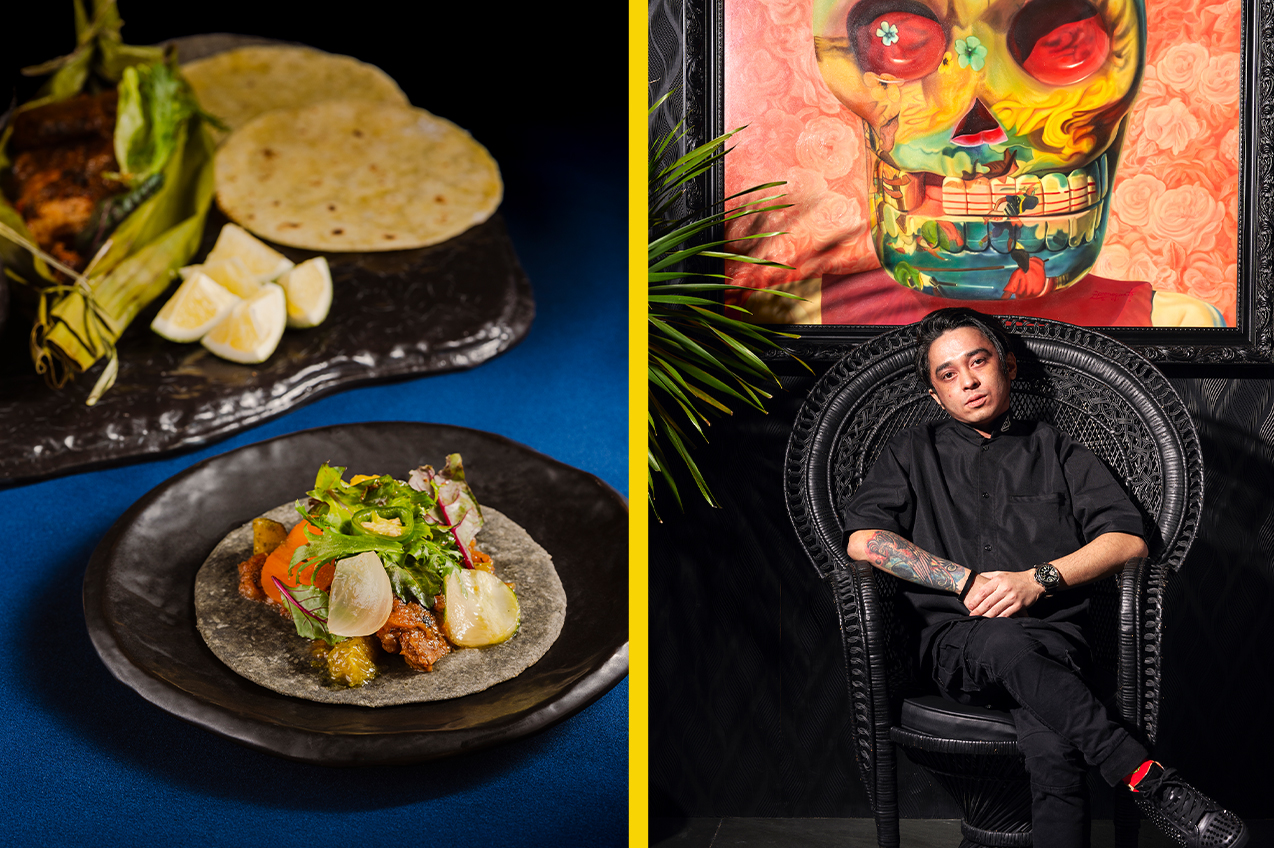On the night of our dinner at Alegria Manila, Charles Montañez flashes us one of his new tattoos—a bound Asuka Langley Soryu. But unlike the Neon Genesis Evangelion character on his forearm, Montañez makes it absolutely clear right from the get-go that his new menu is neither shackled by any limitations nor unburdened by the weight of expectations.
“Since we opened, the response has been overwhelming,” says Montañez. “After almost six months in, my team and I felt the need to give our guests something new.”
Not to sound flirtatious but Montañez has many assets. One of his best qualities though is his aversion to getting too comfortable in his safe zone. This habit that many successful creatives consistently avoid—and psychology confirms as beneficial—seems to come naturally for the tatted chef whose big ambitions belie his humble start.
And he shows it loud and clear in this rebooted menu. Though not abandoning everything that has made him quite the Latin-Filipino fusion star, the new menu creates space for conversation starters even without having the need to say anything at all. Though as anyone who has had the chance to dine at his flagship restaurant, Montañez sure has a knack for sharing personal anecdotes simply because he enjoys telling stories both through speech and sustenance.
Value is a real draw
There’s a lot to unpack in the new menu. The approach is high-octane yet also high-value; you get incredible bang for your buck without a diluted tasting menu performance (his full 14-course menu comes in at P4,950++ while the abbreviated seven-course option at just P3,600++).
This, he says, is in anticipation of a possible “low season” among consumers who naturally clamor for new experiences after a certain period.
Though not abandoning everything that has made him quite the Latin-Filipino fusion star, the new menu creates space for conversation starters even without having the need to say anything at all.
“We mixed and matched different components and cooking techniques while utilizing local produce and Latin American ingredients. We are creating dishes that are completely our own,” he says.
In contrast to its predecessor that focused on small bites and tapas, the new menu paints a progression of sorts—with only the tanigue blood cup as the sole vestige of the original menu—and taps more Filipino reference points across the main course-centric menu.
Versatility is a value that serves its purpose here as Montañez amasses a hit list of offerings imbued with the bounty of the Philippines, Latin America, and the rest of the world.
Appreciating the allure of Alegria Manila (again)
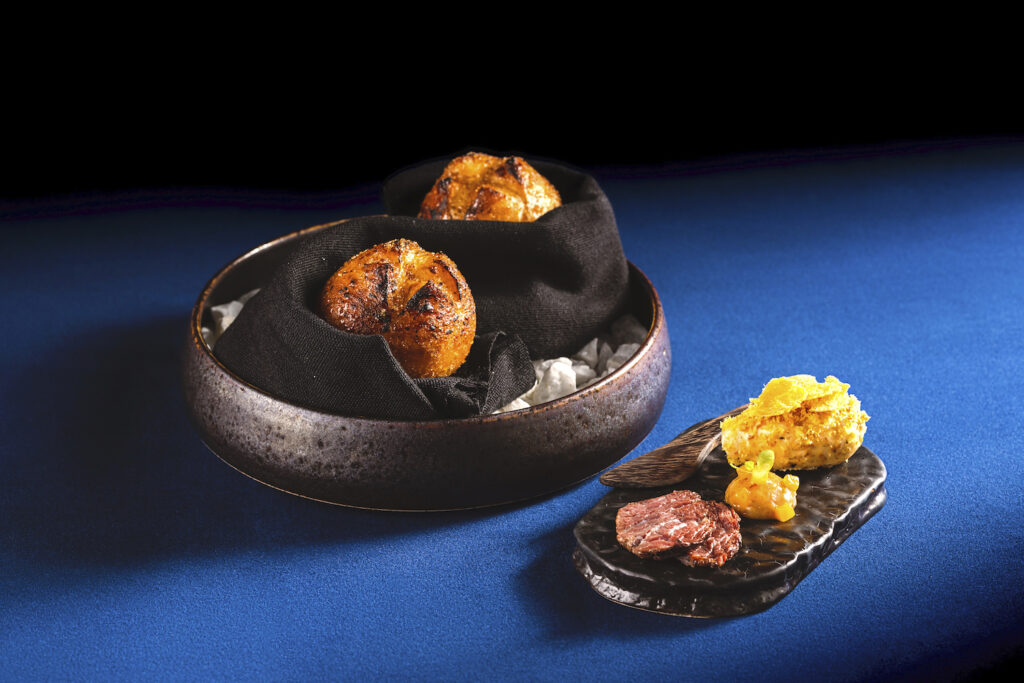
His bread course kicks off the affair with a literal bang, featuring putok—a sweet panaderya staple—accompanied by rich sides (a fermented red rice and carabao beef tapa) that depict another local favorite, the tapsilog.
A flurry of the familiar and the foreign follows soon after: an admirable play on tortang talong with drops of egg yolk poached in butter, sun-dried tomatoes, and caviar; the tanigue blood cup retained from the previous menu; and a cassava and crab “satti” skewer gleaned from Zamboanga with notes of Filipino curry and prawn tartare on top.
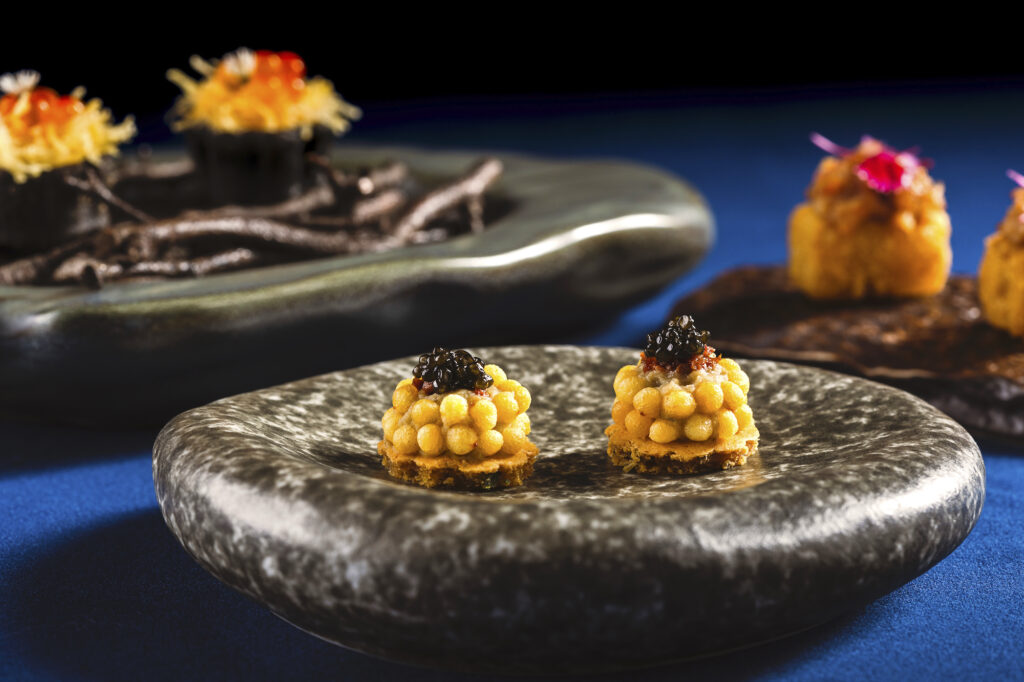
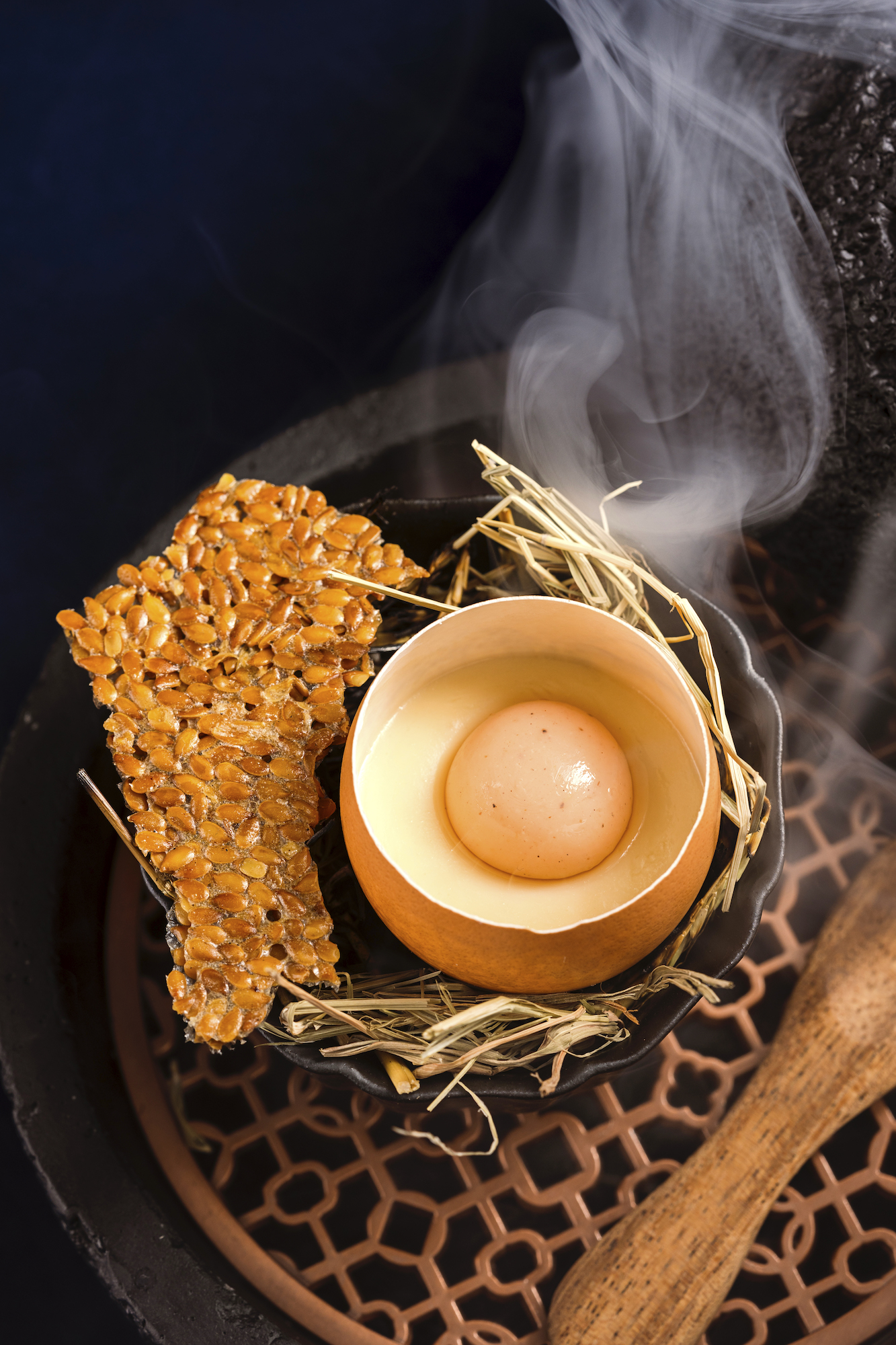
The crowning glory however of this opening salvo is the chicken chawanmushi that is masterfully cocooned inside a “rock.” Open it and the smoke wafts gently through the air. “Take the spoon, delicately scoop out the custard along with the chicken sphere and then as it explodes, bite into the chicken flax tostada chip,” instructs Montañez. It’s slightly theatrical, yes, but it also boasts unforgettable flavors of Bacolod chicken inasal.
Filipino flavors act as the base

Elsewhere, Montañez does beautiful things when he uses Filipino inspiration to his advantage like on the etag that’s been hang-smoked for seven days and then serving it with grapes pickled in Earl Grey tea, a sofrito made with jalapeño, and pinipig to give it a slightly thick and textured mouthfeel. “What you see on top is truffle with aerated burong singkamas where all the souring comes from since this is a play on dinakdakan.”
There’s a similar resolve on the Aged Comte, Goat Cheese, and Raclette Muscovado, and Flour Tortilla, a dish inspired by Negros Occidental’s piaya, only this time he finishes it off with sunflower seeds and a deliciously fresh salsa that delivers just the right amount of heat from the habanero.
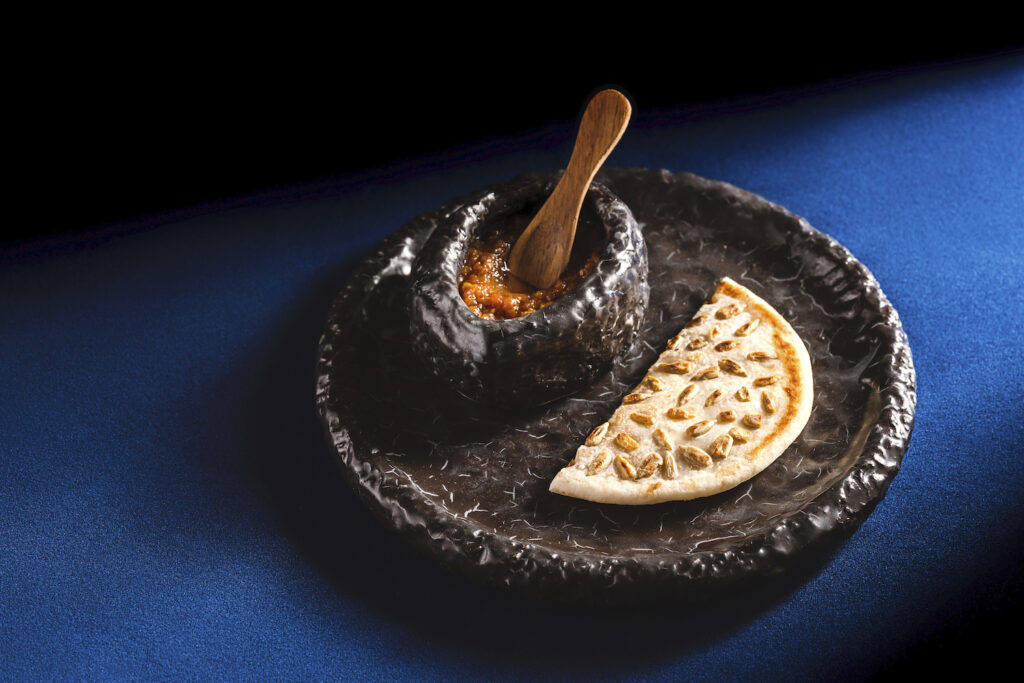
There’s a lot to unpack in the new Alegria Manila menu. The approach is high-octane yet also high-value; you get incredible bang for your buck without a diluted tasting menu performance.
A midway break in the form of the Mexican frozen dessert mangonada (softly enhanced by a kiamoy sauce and pecorino) cleanses the palate before diving back into a Montañez mami or “a warm embrace from the chef” using heart of palm for the wide and flat noodles and Hokkaido scallops, truffle purée, and a salmuera made with smoked orange and burnt herb as the sahog.
The broth is exquisite, thanks to the prawn heads and chicha de jora (beer from fermented corn) and the vegetable noodles retain some firmness to complement the wood-fire cooked scallops. “Warm embrace” is a wonderful summation of the dish.
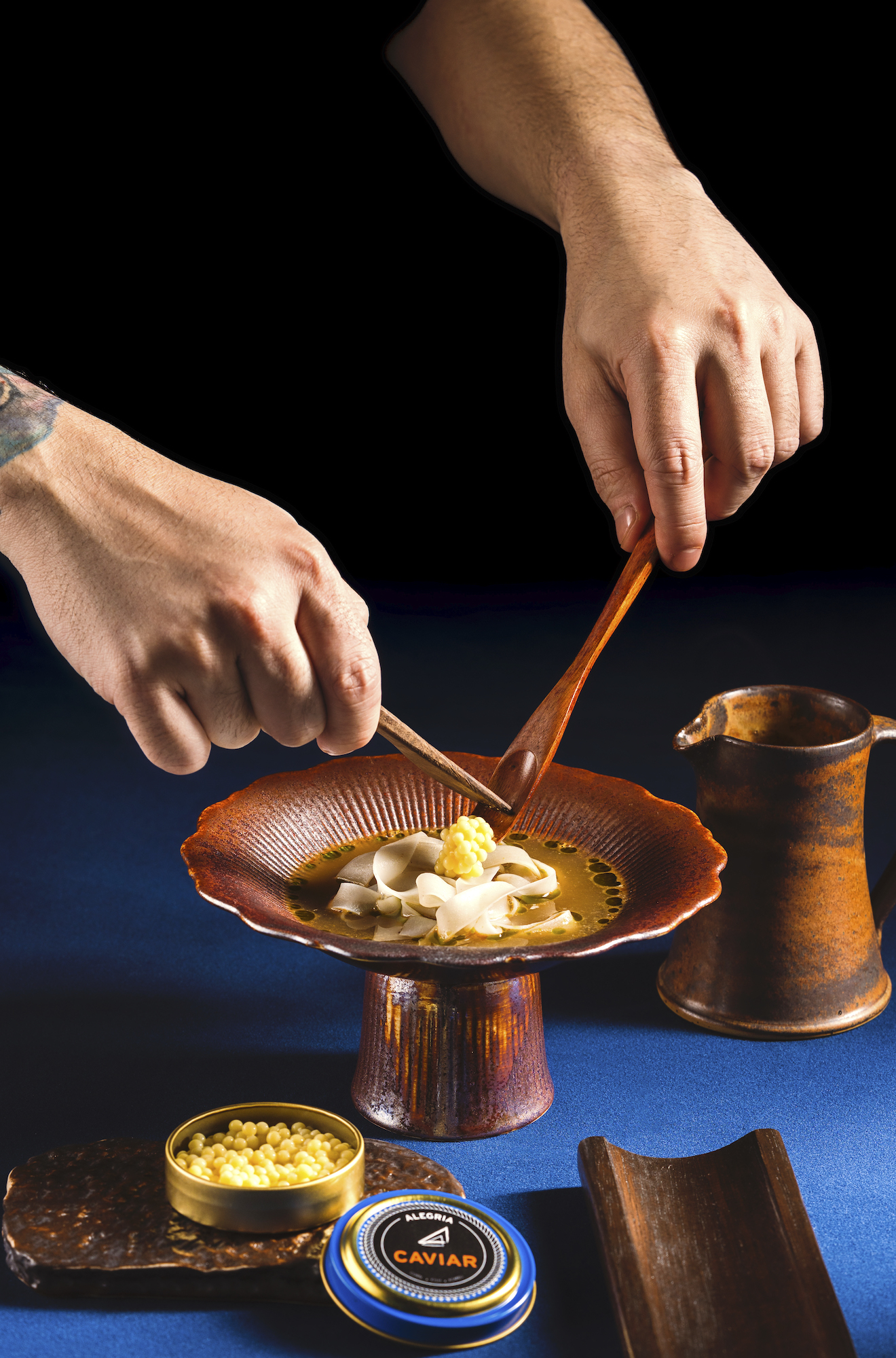

The next two dishes continue to make rewarding impressions. First, an A4 Wagyu carpaccio so simple on paper with its adlai cooked with tripe and a bit of bone marrow but so complex in flavor that it mimics the funky earthiness of blue cheese. Then comes a fish moqueca or a Brazilian seafood stew done askew.
“There’s sibujing on top,” says Montañez. “It’s like the native onion in Mindanao particularly from the Maranaos and it has a very distinct taste compared to the onions of Manila. What’s underneath is what we call tetela, a native triangular corn pocket from Oaxaca, Mexico stuffed with different ingredients but for us we stuffed it with laing. It’s like Brazil, Mexico, and the Philippines in one dish.”
It looks like child’s play for adults
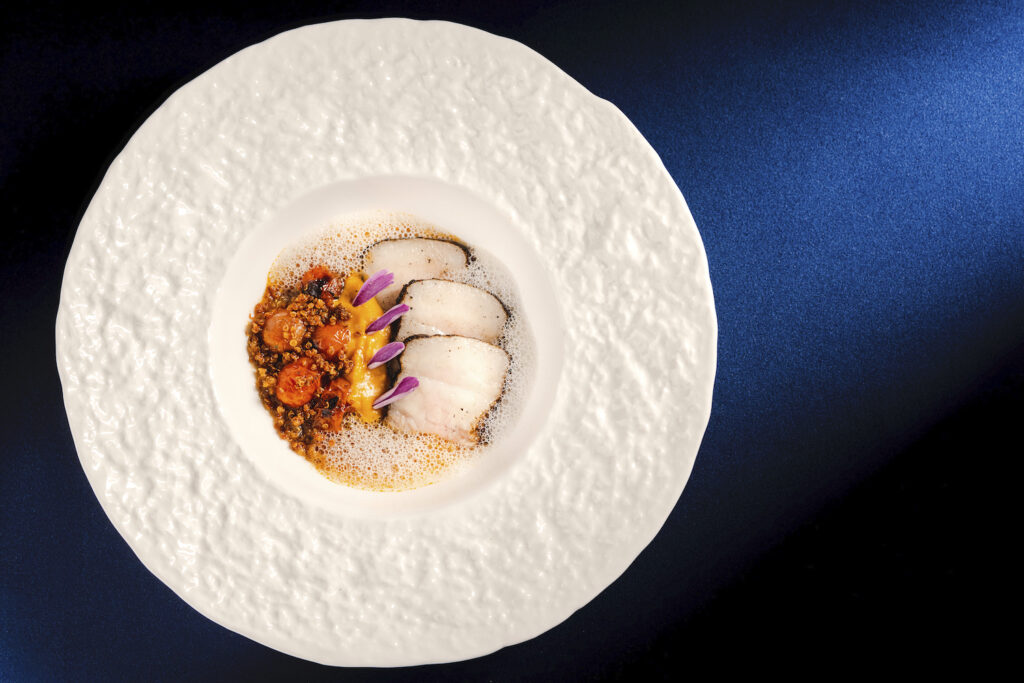
From here on out, the transcultural menu takes an interactive turn. No matter your age, the balisong the server hands you to cut through the gorgeous Ibérico pork underneath a multitude of complex layers—horchata foam, roasted cherry tomatoes, puffed quinoa, and kale chicharron—has obvious benefits: The playful factor instantly gives you a second wind near the tail end of the dinner.
And once your mood shifts, Montañez delivers a final blow with a make-your-own taco platter that, he says, will constantly change to keep guests on their toes. In our case, an entire tray of fiery flavors from the chicken barbacoa.
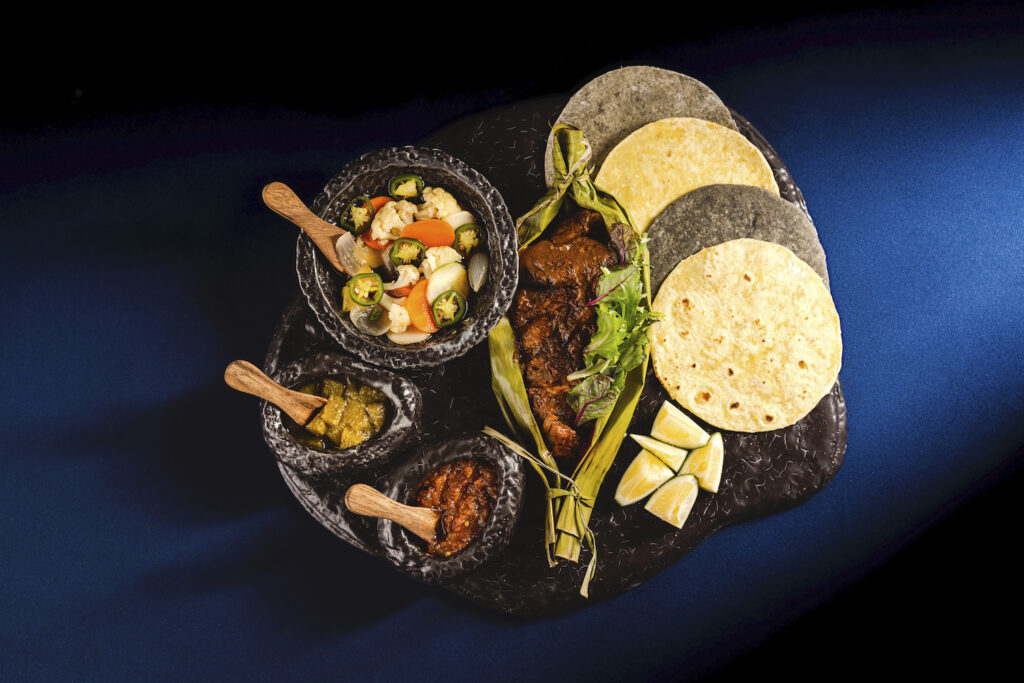
“There’s a bunch of Mexican chilis—pasilla and morita—and Mexican achiote, and an array of salsa—salsa roja, almuera, pico de Gallo—and escabeche soaked in tepache (fermented pineapple beverage) that’s been fermenting since last year.”
Lastly, Chico Orcine’s two totally different desserts bookend the three-hour experience: A 36-hour, sous-vide grilled pineapple with tsokolate de batirol whose fiery introduction onto the table literally goes up in flames, and then to finish, a delicate yet crumbly strawberry with basil and tea.
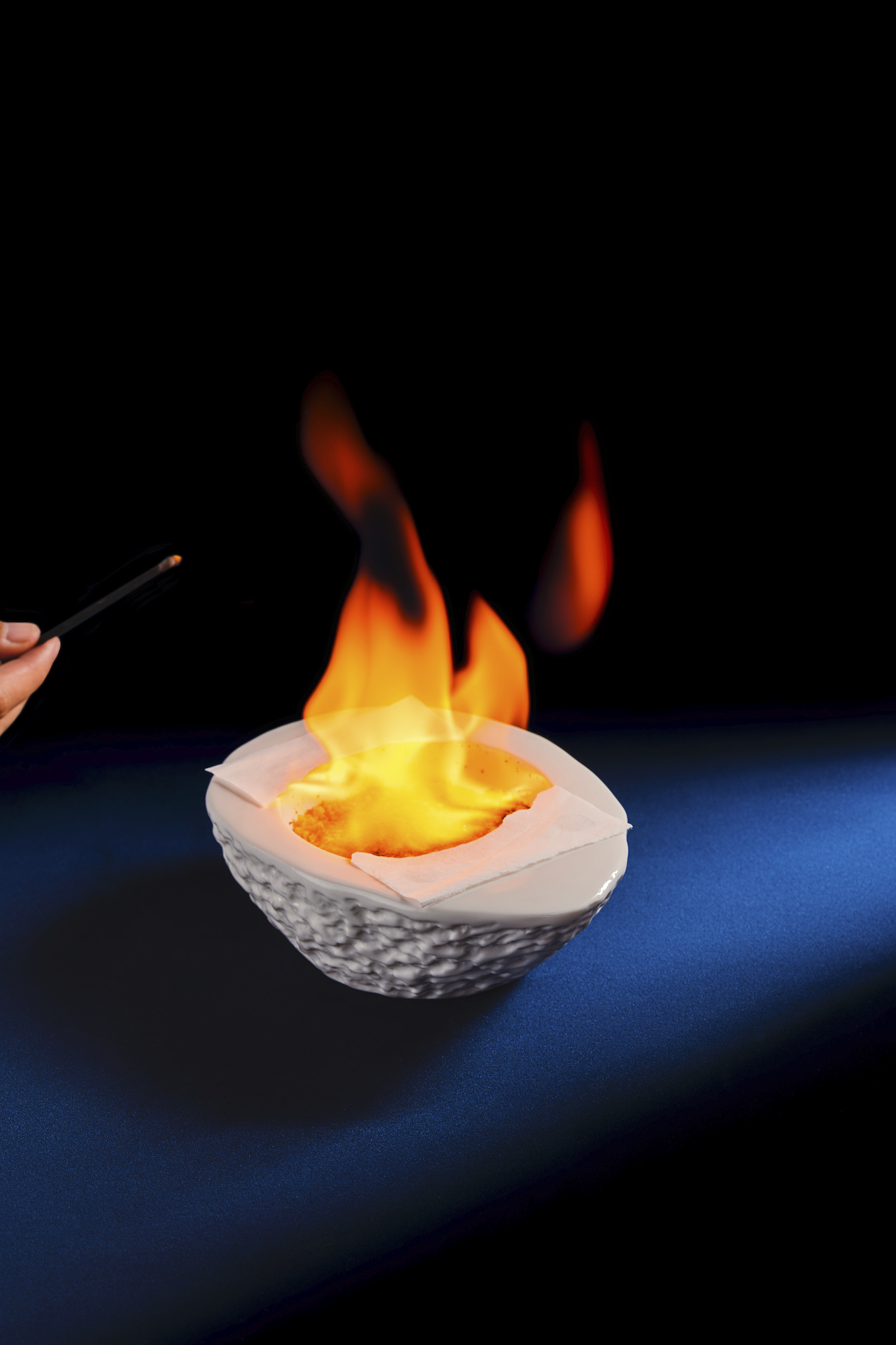
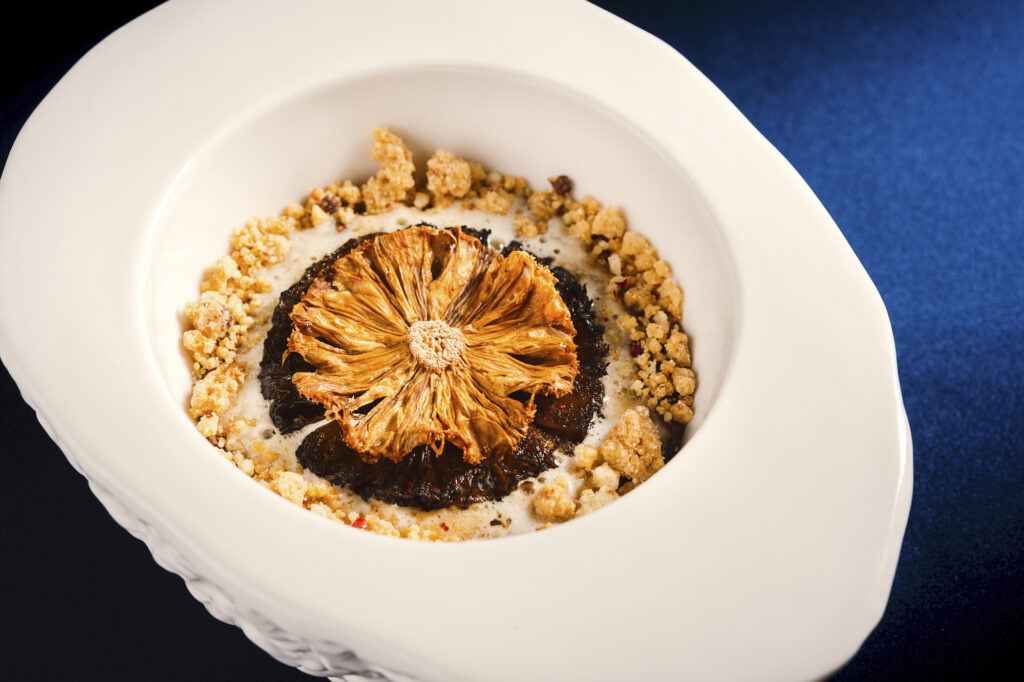
A break from the norm
Is this death by food in the most positive and exciting way possible? Potentially but it circles back to Montañez’s intention of giving value for a customer’s hard-earned money.
The new menu’s goal may be more self-aware, more grounded, but its evolution is no less dramatic and joyous.
But even though this much food on offer may be a double-edged sword depending on the customer’s capacity to eat (or overeat), it does convince you of an important insight: Edible escapism does have a place in a society recovering from the stress of a pandemic. That said, these emotional needs will need to offer incredible value for money to attract new customers as well as allay fears of curious yet inflation-conscious consumers who may want to start their tasting menu journey.
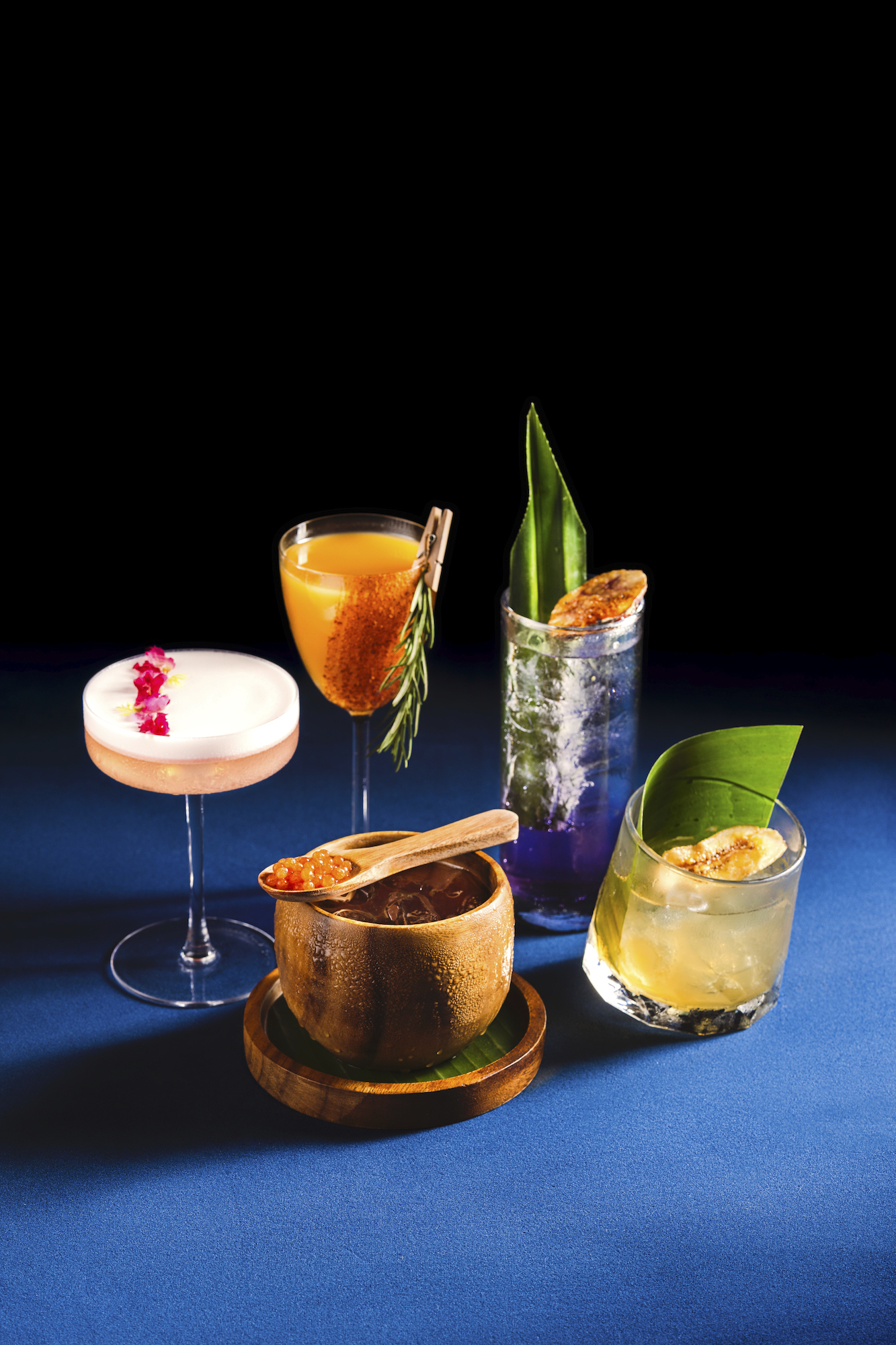
And what Montañez seems to be doing at Alegria Manila is really taking small steps and playing around with ideas to carry diners off into an optimistic space every once in a while. The new menu’s goal may be more self-aware, more grounded, but its evolution is no less dramatic and joyous.
All things considered, we may not need a second coronation as this Charles, unbound from inhibition, shows you can be a king without a crown.





